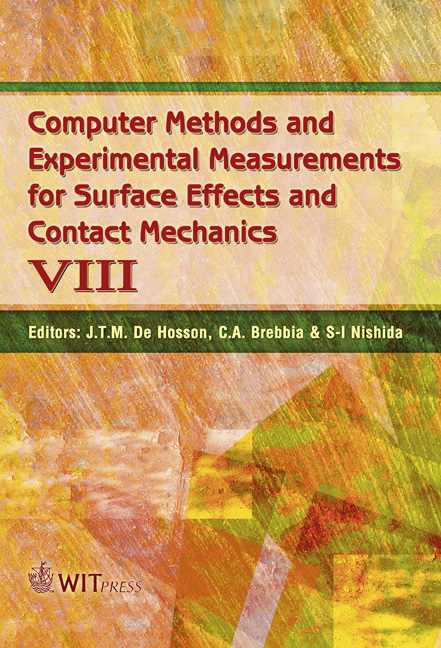Hydrogen Permeation Behavior In Polycrystalline Nickel Implanted With Various Elements
Price
Free (open access)
Transaction
Volume
55
Pages
9
Published
2007
Size
507 kb
Paper DOI
10.2495/SECM070051
Copyright
WIT Press
Author(s)
R. Nishimura, K. Okitsu, H. Inoue, R. M. Latanision & G. K. Hubler
Abstract
The entry and transport of hydrogen in polycrystalline nickel implanted with various elements (He, Ar, B, P, S, Bi, Ni, Y, Pt, As, Pb and Sb) has been investigated in a fluence range of 1 x 1014 to 2 x 1017 ions/cm2 using an electrochemical permeation technique and etching technique, where the elements used are categorized as follows: inert elements (He and Ar), the substrate element (Ni), metalloids (P, S, Sb and As), a catalytic element (Pt) and the other elements (Pb, Bi, Y and B). It was found that the effective diffusion coefficient of hydrogen and the effective solubility were largely dependent upon fluence and elements in comparison to those obtained from non-implanted nickel. The results obtained were qualitatively explained in terms of gas bubbles and defects generated by implantation, compressive stress, catalytic effect, the formation of amorphous phase and so on. Keywords: hydrogen permeation, ion implantation, fluence, element, hydrogen diffusion coefficient, hydrogen solubility. 1 Introduction Many researchers have investigated the interrelation between hydrogen embrittlement (HE) and metalloid segregation as metalloids may act as preferential grain boundaries in metals and alloys [1-6]. Segregated sites for the absorption of hydrogen may decrease the cohesive strength of the material.
Keywords
hydrogen permeation, ion implantation, fluence, element, hydrogen diffusion coefficient, hydrogen solubility.





